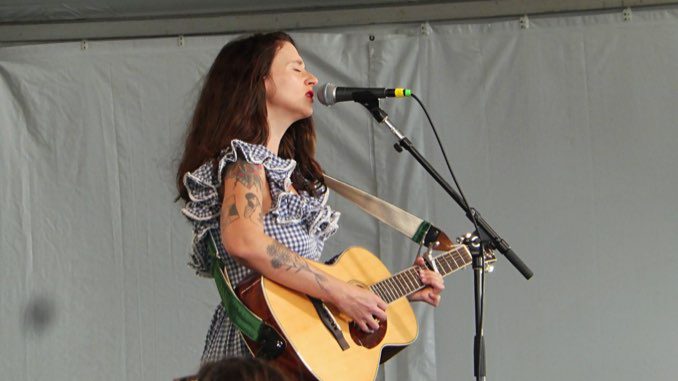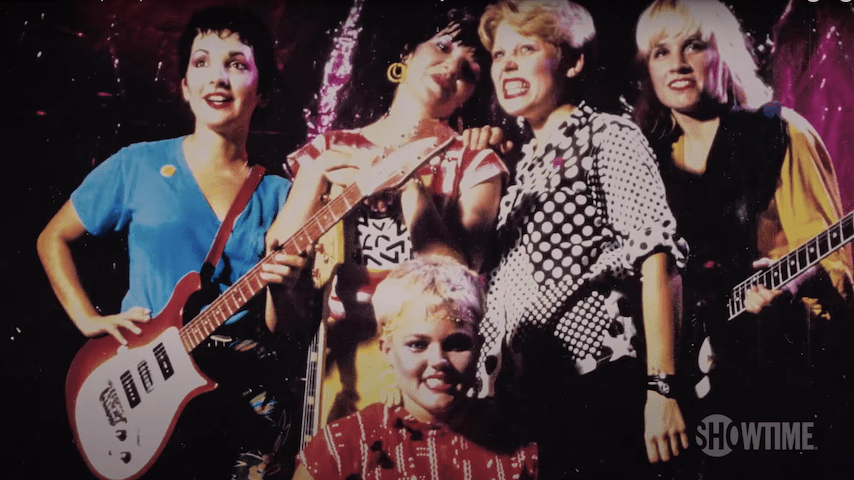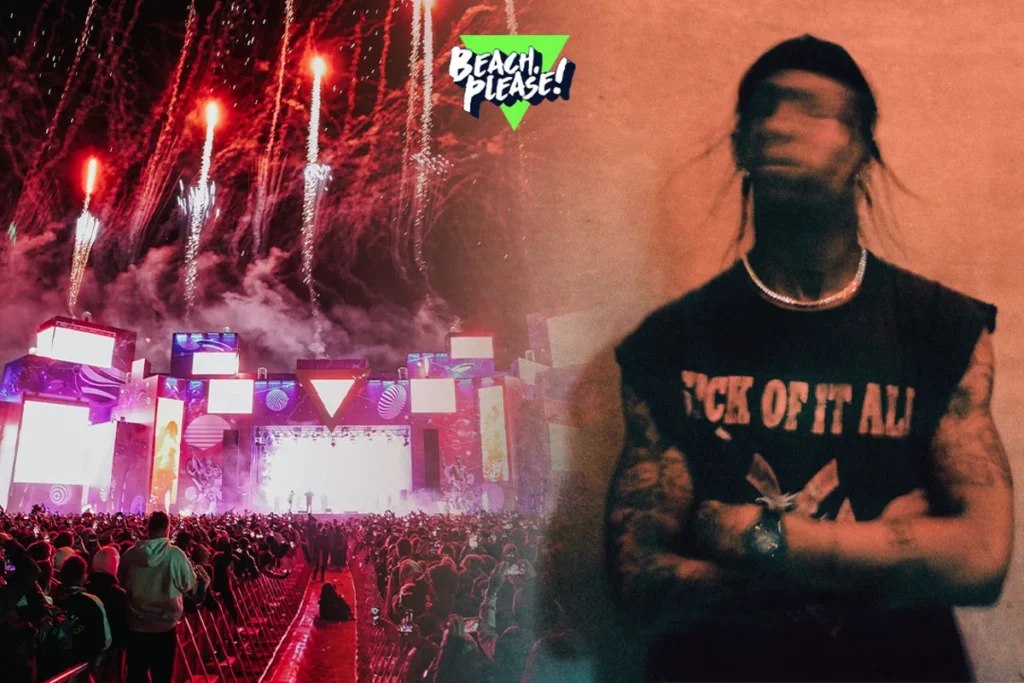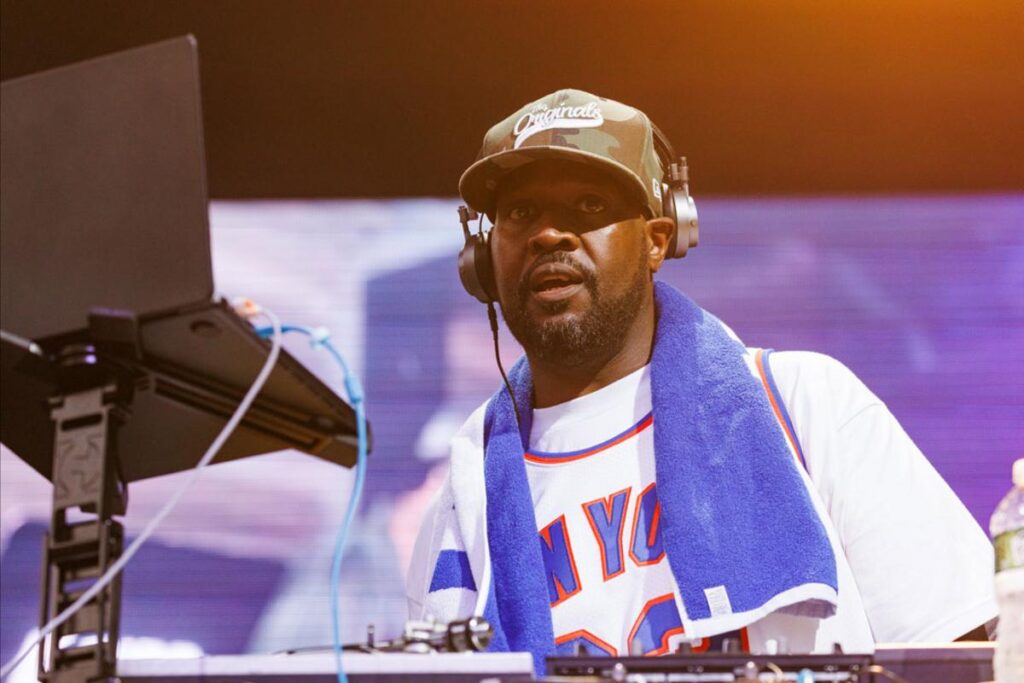The most remembered date in the history of the Newport Folk Festival is July 25, 1965, the day Bob Dylan famously “went electric.” When he replaced his usual acoustic guitar with a 1964 sunburst Stratocaster to perform “Maggie’s Farm,” “Like a Rolling Stone” and “Phantom Engineer” with a band, he was greeted by a mixture of boos and cheers. He thus drew a line in the sand between the folkie past and the rock ‘n’ roll future—not only for himself, but also for a whole generation of singer/songwriters.
At this year’s Newport Folk Festival, expanded for the first time from three days to six, July 23-28, quite a few artists took the opposite approach and “went acoustic.” Performers such as Jason Isbell, Beck, Patterson Hood, Julien Baker, Robyn Hitchcock and Katie Crutchfield strapped on acoustic instruments instead of their more usual electric axes. At the same time, a whole crew of young, African-American women—Sunny War, Yasmin Williams, Joy Oladokun, Amythyst Kiah and Yola—proved that the acoustic guitar belonged to them as much as anyone.
These hollow, six-string instruments provided a different sound for their owners and an important symbol, as well. The guitars not only softened the sound and clarified the lyric, but also signified a connection to a past tradition. And that was important as the Newport Folk Festival struggled to justify its middle name. In recent years, the event seemed to ignore the question, acting as if it could accommodate any act that wasn’t eligible for the Newport Jazz Festival the following weekend. But this year, in the wake of last year’s coronavirus-canceled fest, artists seemed more willing to wrestle with the meaning of “folk” music.
Of course, the acoustic guitar was seldom the lead instrument in true folk music, those songs that were created by amateur musicians and performed for their fellow members in tight-knit communities. It wasn’t until professional musicians started touring and working with microphones and amplifiers that the low-volume guitar took precedence over the high-volume fiddle and banjo. What the acoustic guitar symbolizes, therefore, is not true folk music but rather the post-Elvis folk-revival movement of Joan Baez, Bob Dylan, Odetta and Peter, Paul & Mary, all of whom had breakthrough moments at Newport.
Dylan’s wraith seemed to haunt the seaside festival site this like the Ghost of Folk Music Past. Both Beck and Chris Thile took stabs at Dylan’s “Don’t Think Twice (It’s Alright).” Country star Margo Price sang three different Dylan songs over the course of two marvelous sets: “O Sister,” “One More Cup of Coffee” and “Tears of Rage.” On the latter song, Price credited her arrangement to “Joan Baez, who is one of my favorites.” Kevin Morby and his girlfriend Katie Crutchfield recreated the famous Dylan-and-Baez duet on “It Ain’t Me, Babe.”
Emma Swift, the Australian singer/songwriter who released an appealing album of eight Dylan songs last year, sang six of them at Newport. A small woman with long red hair, she brought a chiming clarity not only to older songs such as “Queen Jane Approximately” and “Simple Twist of Fate,” but also to Dylan’s 2020 song, “I Contain Multitudes.” Accompanying her on acoustic guitar was her boyfriend Robyn Hitchcock.
Ida Mae’s guitarist Chris Turpin referred to Dylan as “that chap who played on this stage in 1965.” In fact, when Dylan went electric that year, the Newport event was held at Festival Field. It didn’t move to its present site at Fort Adams until 1985.
Colorado’s Red Rocks has a deserved reputation as the most visually dazzling concert site in North America, but Fort Adams is a close rival with its 1841 stone fort and its promontory setting, surrounded on three sides by salt water. The main stage backs up against the fort’s exterior wall, giving the performers an enviable perspective on the bay. It’s unfair, pointed out Beck, that we performers get this great view while you have to look at us.
The logo for the Newport Folk Festival is a seagull carrying an acoustic guitar through the air. The image is at once completely implausible (there’s no way a bird with webbed feet could grab and lift a wooden contraption three times its size) and curiously apt. This year’s recently finished festival featured nearly as many acoustic guitars onstage as there are seagulls soaring over the sailboat-studded Narragansett Bay that gives the event its spectacular setting.
In past years, electrified rock bands were almost as common as seagulls at Newport, but this year, the festival tried to reaffirm its roots in the folk-revival movement. For example, the Drive-By Truckers, who released two of last year’s very best rock ‘n’ roll albums, were represented by just Patterson Hood and Mike Cooley. This acoustic duo performed as the Dimmer Twins, punningly named after the Glimmer Twins (Mick Jagger and Keith Richards). You wouldn’t want Hood and Cooley to always use this format, which sacrificed the muscular propulsion of the band.
But you’d want them to use this vehicle more often, for the loss of power was compensated by a gain in transparency. They’re two of the best lyricists in pop music today, but the words are often obscured in the din of the band’s live shows. So it was a pleasure to hear every syllable of every word in songs as good as “Heathens” and “Birthday Boy Blues.” Sitting side-by-side in plastic folding chairs with acoustic guitars in their laps, Hood and Cooley alternated lead vocals and supported each other with guitar chords and solos.
Both are fine guitarists, but Cooley was especially impressive, as if he’d been woodshedding during the pandemic. His acoustic instrument had been designed with a moon face and a snake bird, both painted by the Truckers’ in-house artist Wes Freed, and Cooley coaxed sparkling single-note lines from the box. But it was Hood’s recent songs, “Thoughts and Prayers” and “Watching the Orange Clouds,” which spoke directly to school shootings and Black Lives Matter protests. They deserved and received the biggest reactions.
Jason Isbell, a former member of the Drive-By Truckers, also did a stripped-down acoustic set, joined only by his wife and fiddler Amanda Shires and his guitarist Sadler Vaden. Once again, the lyrics for songs as quiet and as devastating as “Elephant” and “If We Were Vampires” were distinct in a way they never are during his rock shows with the 400 Unit. Yes, you miss the power of the band, but you appreciate what you gain.
“How cool was that to hear Randy Newman playing Randy Newman songs?” Isbell asked the crowd after Newman had played the previous set on the big stage. “I grew up spending so many hours listening to Randy Newman albums and wondering how he seemed to be singing what other people said—and they always said the most amazing things. I finally realized that they sounded that way, because he worked really hard at writing those songs.” Isbell has adopted Newman’s work ethic and has achieved similar results.
A lot of the acoustic guitar playing at the festival was mere strumming to accompany the vocals. But several musicians proved that the instrument can be as impressive a soloing vehicle as any other. Playing single-note runs is a different skill on an acoustic than it is on an electric. Cooley, Isbell, Hitchcock and others proved they could make the transition. But the festival’s three true virtuosos of the acoustic were Billy Strings, Sunny War and Yasmin Williams.
Billy Strings is one of the leading figures in the fusion of bluegrass and jam-band rock. He has earned that position by mastering the fast, accurate picking of the traditional music and the freewheeling invention of the other. He displayed both sides of that balancing act by devoting his Sunday set to songs recorded by Doc Watson and his Monday set to songs written by Strings himself. Flanked by his skillful bandmates, the guitarist demonstrated how the tradition bolsters the invention—and vice versa.
Sunny War is less well-known, but this L.A. musician is as talented a guitarist as she is as a songwriter. She picked out bass lines with her thumb and melodies with her index finger, braiding the two different strands into a woven whole. She was so much in command of her acoustic instrument that she never had to call attention to her skills by showing off. Instead she let her understated virtuosity support such beguiling songs as the romantic post-mortem “Shell,” the hooky melancholy ballad “If It Wasn’t Broken” and the atheist anthem “She Don’t Care.”
The biggest revelation of the festival was Yasmin Williams, who has revived the tradition of solo-acoustic-guitar instrumentals. Sitting in a chair, with her frosted braids piled atop her head, she laid her instrument horizontal in her lap and played it almost like a piano, tapping on the strings to make them ring. This enabled her to create a melody in the right hand and a counter-melody in the left, as if she were playing one-woman duets. It was no mere trick, for each part she played boasted a seductive tunefulness that expanded in power when joined in harmony with its partner.
Sometimes she would grab from a nearby table a kalimba, the African thumb piano, and rest it on the face of her guitar. Suddenly her right hand was playing percussive counterpoint to the charming arpeggios played on the guitar by her left hand. Playing selections from her terrific sophomore album, this year’s Urban Driftwood, she provided proof that the acoustic guitar is still capable of new inventions. As such, she confirmed the instrument’s centrality to folk and to the festival with that middle name.
After six days of the Folk Festival and one day off, the Newport Jazz Festival took over the same stages at Fort Adams. The app logo for the jazz event had a seahorse playing a tenor saxophone, even less plausible than the seagull-as-roadie. But for the second event, the signifying instrument was the drum kit. Could it be replaced by a turntable and still be considered jazz? Multiple acts were willing to find out.
Like its younger sibling, the Newport Jazz Festival also harbors anxieties about its middle name. Just as folk music felt challenged by rock ‘n’ roll and the electric guitar in the last century, jazz feels challenged by hip-hop and the turntable in this century. The history of jazz can be told as the story of African-American dance music reinterpreted via improvisation and harmonic substitution. But if that dance music is propelled by a machine rather than an instrument, how can jazz adjust?
Keyboardist Robert Glasper employed Jahi Sundance as his DJ during several sets, allowing Sundance’s scratching, sampling and electronica to embellish the traditional instruments. It was as if the laptop/turntable was just another tool in the musical kit. The mere novelty of a new instrument, however, is not enough to guarantee good music. Glasper, an exceptional technical pianist, seemed incapable of adding much feeling or urgency to his pieces. As a result, they seemed merely decorative, like the chill lounge music they so closely resembled.
Does that mean that the turntable has no place in a jazz band? Not at all. It depends on how it’s used. The same day as Glasper’s first set, the Newport Jazz Festival’s artistic director led a set he called “A Christian McBride Situation.” The bassist fronted a sextet that included tenor saxophonist Ron Blake, keyboardist James Francies, vocalist Alyson Williams and two turntablists: Sundance and DJ Logic.
The DJs were obviously taking the place of the absent drummer, but this set worked a lot better than Glasper’s for two reasons: McBride understands the crucial role of melody and feeling in music, and DJ Logic is one of the best turntablists on the planet. The rhythms never fell into a repeating rut, but were always bubbling and bleeping with new ideas. And the music played over the machines was as pleasurable as it was memorable, as tuneful as it was funky.
For the set by Terri Lyne Carrington & Social Science, the DJ Kassa Overall didn’t replace the drummer (Carrington herself), but supplemented her. As with the McBride set, the fact that the bandleader was in the rhythm section gave the music a grounding that the electric beats embellished without stiffening. The band also included singer Debo Ray, but her precision of pitch and operatic range made the vocalist as welcome an addition to the traditional jazz quartet as the DJ.
Makaya McCraven took a different approach to the hip-hop challenge. Playing a regular drum kit, he was able to replicate the sounds of a hip-hop drum machine and then mix in the vocabulary of the jazz tradition. The result was often thrilling, as trumpeter Marquis Hill, guitarist Matt Gold and bassist Julius Paul followed the leader wherever he ventured. The set would have been a festival highlight if Paul’s too-frequent vocals hadn’t struggled so obviously with pitch.
A more successful attempt at hip-hop/jazz fusion was the set by trumpeter Christian Scott aTunde Adjuah. He too had a drummer, Joe Dyson, who could weave together hip-hop sounds with older jazz, in this case traditions from the leader’s native New Orleans. Whether playing his own composition, “Diaspora,” or the Miles Davis arrangement of David Crosby’s “Guinnevere,” the band proved that hip-hop, funk and New Orleans phrases can feed the jazz hunger for improvisation and transformation as well as anything from the swing era.
“We call this stretch music,” Adjuah told the audience. “That means we try to bring in as many perspectives as possible, because all cultures of music are valid, just as all human beings are valid.”
Some of the best music at this year’s Newport Jazz Festival had nothing to do with the challenges of hip-hop. Singer Catherine Russell resurrected the songs of the 1920s and 1930s with welcome immediacy. The Kenny Barron-Dave Holland Trio, supplemented by drummer Jonathan Blake, showcased three virtuosos interacting at the highest possible level. The Vibes Summit presented three young virtuosos on the vibraphone: Warren Wolf, Joel Ross and Sasha Berliner.
The two best sets of the weekend were provided by the 23-year-old alto saxophonist Immanuel Wilkins and by the 83-year-old tenor saxophonist Charles Lloyd. Wilkins released his dazzling debut album Omega last year, but he’s growing so quickly that his live performance this year eclipsed even that. All the members of his marvelous quartet, even drummer Kweku Sumbry, were reading five- and six-page scores. They needed to, for the music was through-composed with ambitious complexity. But they made it all seem relaxed and spontaneous, each phrase a surprise and yet the logical next piece in the progression.
Lloyd continues one of the most illustrious post-50th-birthday careers in jazz history. He continues to juggle several different bands; this one featured pianist Gerald Clayton, guitarist Marvin Sewell, drummer Eric Harland and bassist Harish Ragavan. Sewell emphasized the Delta blues undercurrent in the music of the Memphis-raised Lloyd, and Harland brought out the Asian flexibility in the Buddhist leader’s rhythms. When Lloyd played the African-American anthem, “Lift Ev’ry Voice and Sing,” his tenor sax captured the frustration of his community in a climactic angry wail, but resolved into a keening hope for a better day soon to come.




